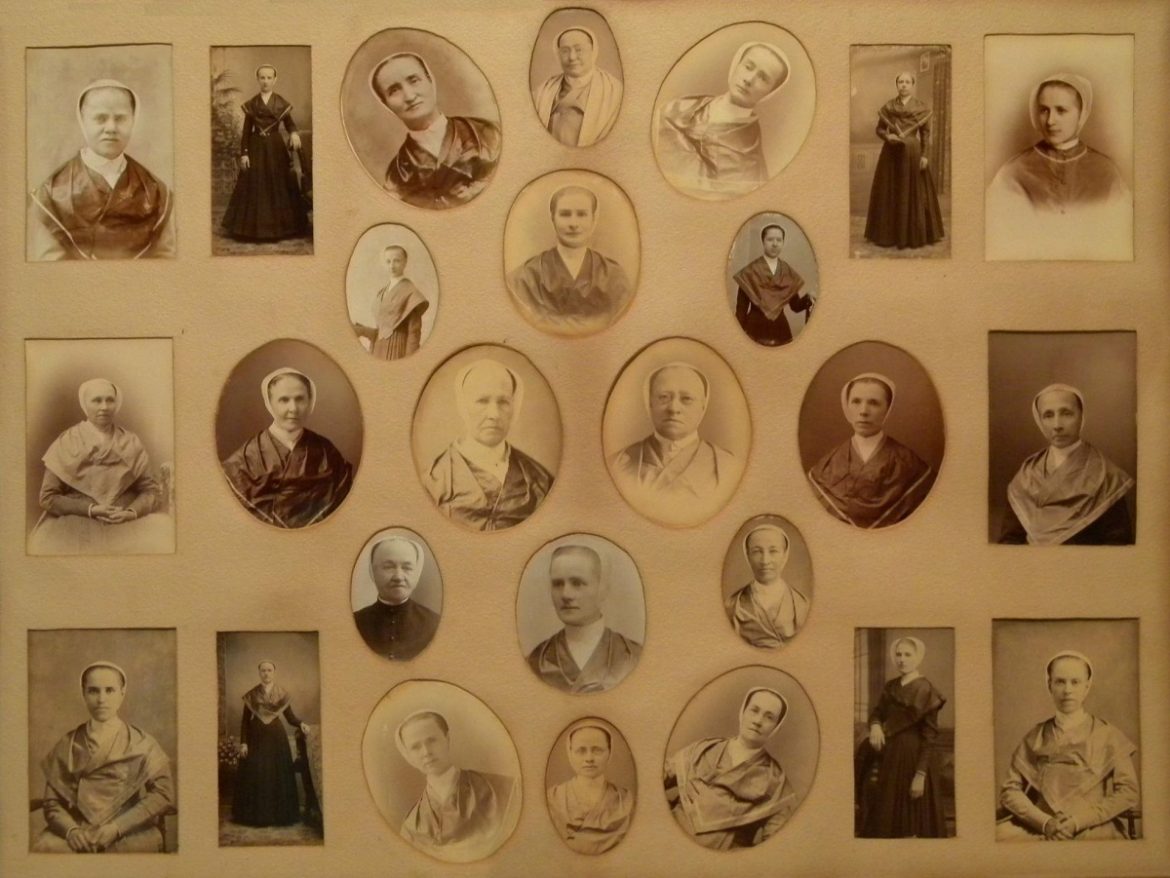
Framed group of portraits of 26 Sisters of Mount Lebanon, NY. Shaker Museum | Mount Lebanon 1958.10406.1.
In the 1870s, the leadership of the Shakers struggled with a growing problem: the taking and keeping of photographs. The question of whether or when it was appropriate for Believers to own photographs illustrates the particular challenges confronting the leaders of a communal society, and the concerns that the Ministry expressed show the blend of […]
In the 1870s, the leadership of the Shakers struggled with a growing problem: the taking and keeping of photographs. The question of whether or when it was appropriate for Believers to own photographs illustrates the particular challenges confronting the leaders of a communal society, and the concerns that the Ministry expressed show the blend of spiritual and worldly considerations that factored into the decisions they made.
Beginning in the late 1860s, the Shakers accommodated visits by commercial photographers. Notable examples include James Irving of Troy, NY, who took dozens of images, which he then printed as stereographs and cabinet cards, showing scenes of the communities at Mount Lebanon and Watervliet, NY. Photography eventually became a mutually beneficial business, as the Shakers sold these photos and postcards in their stores. Individual Shakers then began to pose for portraits and exchange photographs among one another, and that’s when problems arose. On October 7, 1873, Elder Giles Avery wrote that it was necessary to “Speak [at a meeting] about the disuse of photographs.” A few weeks later, on November 1, the central ministry at Mount Lebanon issued the “Circular Concerning Photographs, Daguerreotypes, Ferrotypes &c.” On December 7, the announcement was made that the taking of photographs “had been carried too far, and must be checked.”
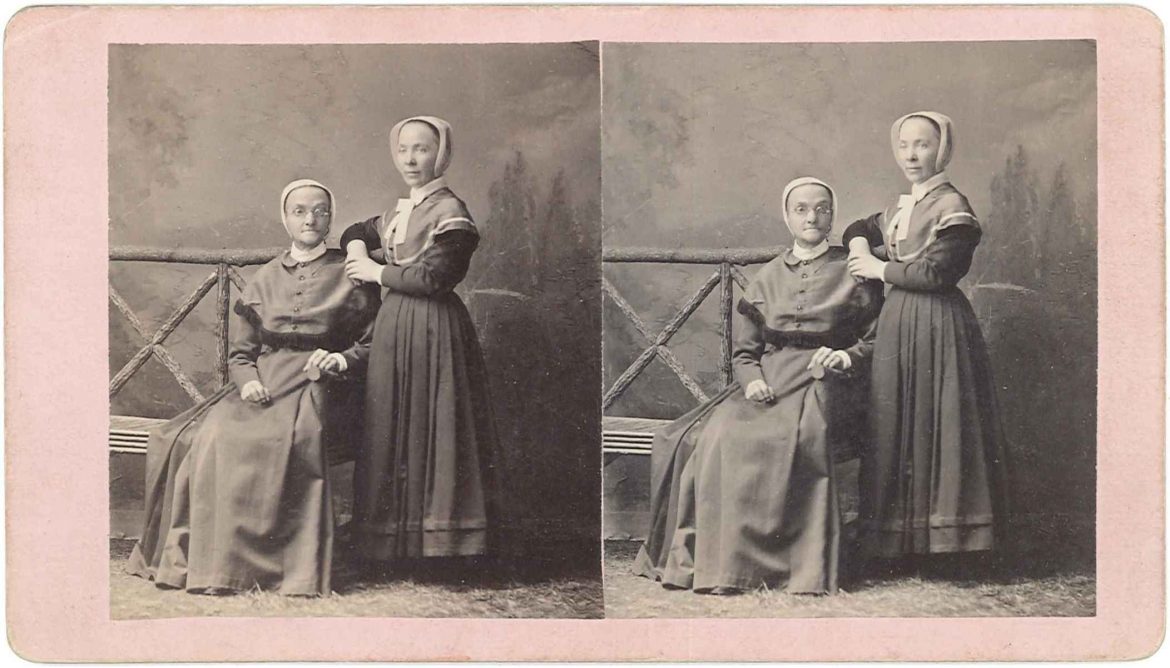
The circular explained in detail the Ministry’s opposition. Chief among their concerns was the danger to Believers’ spiritual well-being; the elders wrote that, “The tendency of their use, in multitudes of cases, is to foster a worldly affection, vanity, pride, and even worldly lusts, by persons of both sexes….” They also worried about the threat that taking and owning photographs posed to union and the shared sense of equality essential to communal life: “If these personal pictures were only limitedly allowed, that is, to some persons, and not to all, there would be an injustice that would breed most serious trials, and loss of confidence in Leaders; for, if they may have them to keep, and others be denied, much harm would ensue. If pictures of Leaders, or some preferred persons may be taken, and not those of common members a worldly ambition would be encouraged, and aristocratic influences engendered, productive of much evil.”
The Ministry also expressed their concern about the temporal, financial burdens that photographs would impose. The circular states, “If pictures of persons are freely allowed, then each individual might wish a picture of, not only one or two persons, but of all whom they deem special friends, whether at home, abroad in other societies, or in outside society. Many would desire to procure the pictures of the (so called,) great men and women of our day.” Then the elders calculated the real cost of photographs: “To purchase these pictures @ from 15 to 25 cts each, and Albums @ from $1.00 to $3.00 each, would cost from $1.00, to $4.00, to the individual pr year. In the course of ten years, (accordingly as they might multiply to themselves pictures, say from ten to forty pictures each,) in this way, a family of 50 persons, supposing only half of them to supply themselves with pictures, would easily accumulate, an expense of from $250.00 to $1,000 for pictures alone. This sum seems heavy, and yet it would only give to each individual a few pictures per annum, and a book to keep them in.” Seen in this light, the collecting of photographs would indeed seem to be an impractical course.
Therefore, the Ministry concluded, “all Photographs… of persons, in an individual capacity, or in groups, unconnected with general landscape or village scenery at large, possessed by Believers, should be destroyed, at once.” Few photographs taken prior to 1873 are known to exist, suggesting that Believers obeyed the directive. But the problem was not permanently resolved, for in July of 1879, in the Shaker Manifesto, it was announced that the “publishers [of the Manifesto] deem the use of Societies’ funds for the procurement of photographs to be in contravention of sacred consecration, and as militating against that harmony, meekness, love and fraternal equality which characterizes the true members of the Church of Christ. Our motto should be personalities absorbed by principles.”
However, thousands of photographs, including studio portraits, of individual Shakers are extant. The ownership of photographs could be justified on the grounds that it was a way to honor elders and eldresses of the family and of the Society as a whole. In August of 1894, Eldress Sarah Collins of the South Family, Mount Lebanon, wrote, “Last week we received Elder Henry’s [Henry C. Blinn] photograph, for which please receive our sincere thanks.”
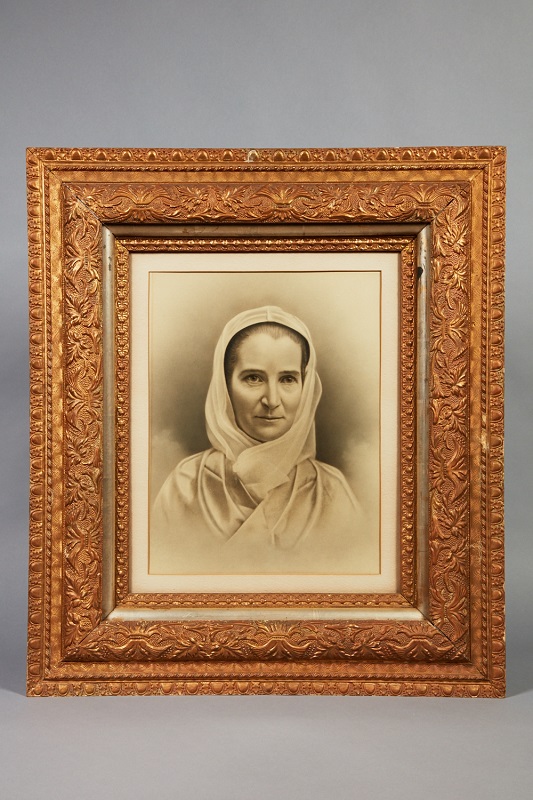
Photographs of leaders were also a way to provide a visible example for members to follow. On October 21, 1894, Sister Lizzie Horton of Canterbury, NH, wrote to Eldress Eliza Ann Taylor that, “I must not forget to tell you how much we value the pretty gift of your photograph. It is still the crowning ornament of every Sisters’ apartment in our Dwelling House, and Sister Asenath remarks, pointing above, ‘There is my patron saint. I keep her up there above the heads of the tallest, to indicate her spiritual position and also, that every one shall look above themselves, if they see her at all.’”
Photographs could be even be seen as contributing to union, in that photographs offered a means of feeling connected to fellow Believers divided by geographical distance. On December 18, 1892, Asenath Stickney wrote to Eldress Eliza Ann Taylor of Mount Lebanon, NY, “Perhaps you may not see who is [writing this], but ah! I can see you just as clearly as the sunshine…. [The] presence of the Photo makes you seem so near that I fancy that you are looking right at the movements of my pen.”
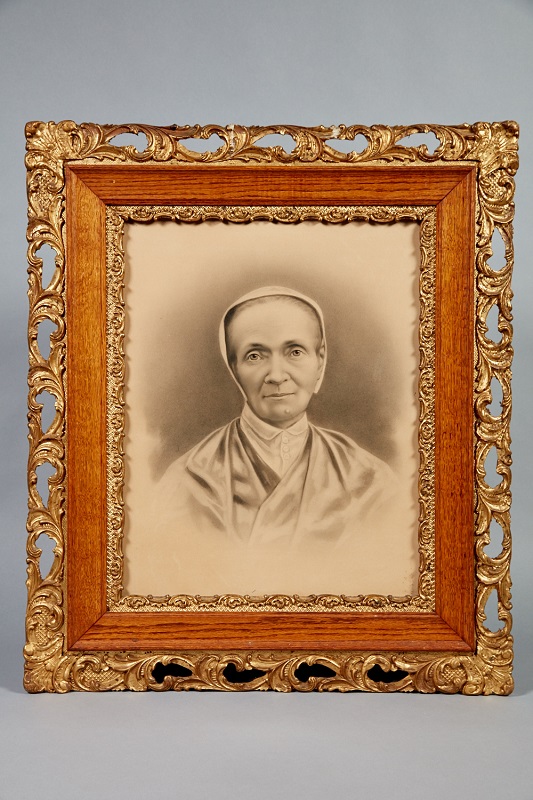
By late in the 19th century, Shakers’ living spaces reflected the sensibilities of the Victorian era in which they lived, and Believers came to own more items of a purely decorative nature. In their retiring rooms and work rooms, contemporary photographs show that Believers had books, framed artwork, and ornaments, as well as plenty of framed photographs. In June of 1883, Sister Anna Dodgson wryly noted, “House plants have become frequent and common & pictures a growing.”
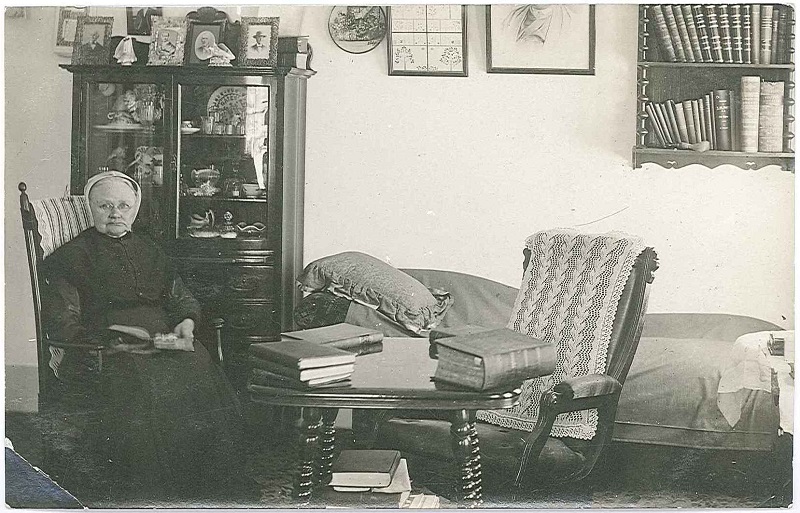
Admirable scholarship, as usual